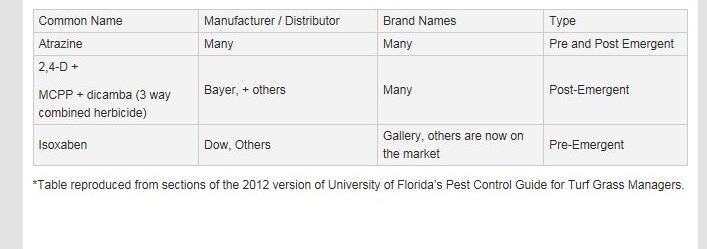
by Matthew Orwat | Oct 21, 2016
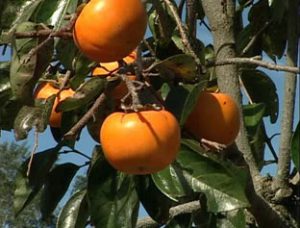
Image Credit: gardeningsolutions.ifas.ufl.edu
A recent visit to the North Florida Research and Education Center reminded me of a fruit that is often low profile in Northwest Florida, the Oriental persimmon. The Oriental, or Japanese, persimmon (Diospyros kaki) was introduced to the Southern United States in the mid to late 1800s. Although it is native to Japan and China, it is a close relative of the native persimmon Diospyros virginiana.
In the early 20th century the oriental persimmon was a popular fruit crop in Florida, but this industry declined due to marketing factors. The Oriental persimmon is still a viable fruit for home gardens.
Trees are available grafted onto local native persimmon rootstock, which enhances their ability to perform well in Northwest Florida soils.
Persimmons are divided into two types for the purposes of marketing: astringent and non-astringent. Astringent persimmons contain high concentrations of tannins which cause the mouth to pucker when eating the persimmon if it is not fully ripe. When fully ripe, they are rich and sweet, but very soft. Non-astringent cultivars can be picked hard and ripened for 7-10 days at room temperature. Non-astringent persimmons were developed in Japan and introduced to the U.S. market in the 1980s. These have become very popular with home gardeners since they can be eaten when firm, and have a crunchy texture. Persimmons are popular today in Asian cuisine and as a dessert, since they contain sugars at levels between 15 and 25%.
Persimmons have relatively few pests in Northwest Florida when compared to other higher maintenance fruits such as peaches and plums. Fungal leaf spot caused by species of cercospora, alternaria and anthracnose can cause premature defoliation. Fungicidal sprays are useful in controlling these diseases if they are at high enough levels to cause tree injury. The stem and branch fungus Botrysphaeria dothidia will cause deep, elongated branch lesions similar to canker. These openings invite borers into the tree and can lead to loss of the limb structure. The best defense against this problem is a good offense; a healthy tree will be less likely to be attacked by this fungus. Dormant sprays of copper or sulfur based fungicides can also help reduce the incidence of all fungal diseases.
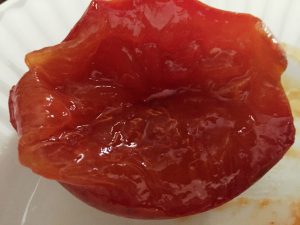
Fully ripe persimmon, ready for a scoop of ice cream! (Image Credit Matthew Orwat)
The major insect pest of persimmon is scale. Thankfully, scale can be controlled with dormant oil or season all horticultural oil. Persimmon psylla can cause leaf deformation early in the season, but is not always a large enough problem to warrant control. Natural enemies often eliminate the need for chemical control. If control is necessary, several insecticides labeled for fruit trees will take care of the problem. Twig girdlers can lay eggs on persimmon stems in September and October, and once hatched, the insect can girdle the stem and the stem will die. To control this pest it is important to remove dead and infected wood each growing season.
Out of the non-astringent cultivars, Fuyu regularly rates as the most popular and reliable cultivar. It does require thinning, since it often sets too much fruit, which can cause branches to bend and break. A good practice is to thin out 50% of the fruit during years in which fruit set is heavy.
Below is a chart of different non-astringent persimmon cultivar characteristics from the IFAS Extension publication SP 101, from April 1994 by E.P. Miller, Biologist; T.E. Crocker, Professor, Horticultural Sciences Department, Cooperative Extension Service, Institute of Food and Agricultural Sciences, University of Florida.
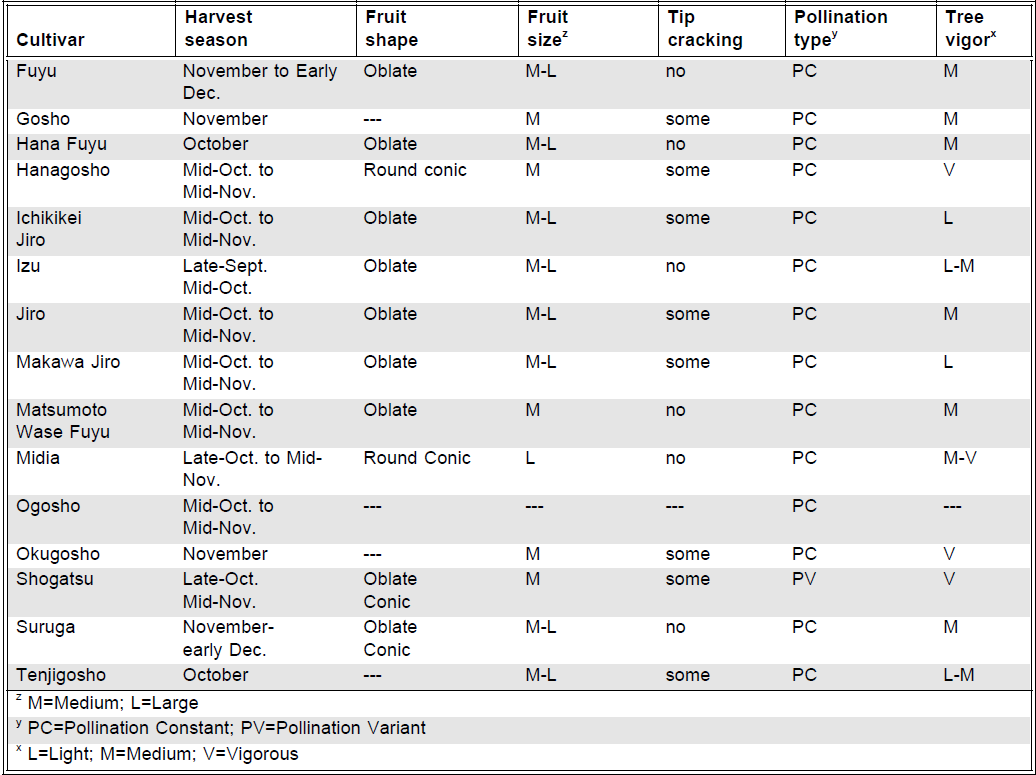
Characteristics of non-astringent cultivars. SP 101, from April 1994 by E.P. Miller; T.E. Crocker,
For further information please consult the UF / IFAS publication ENH 388: Diospyros kaki: Japanese Persimmon and the previous Panhandle Agriculture article Oriental Persimmon Varieties for North Florida .
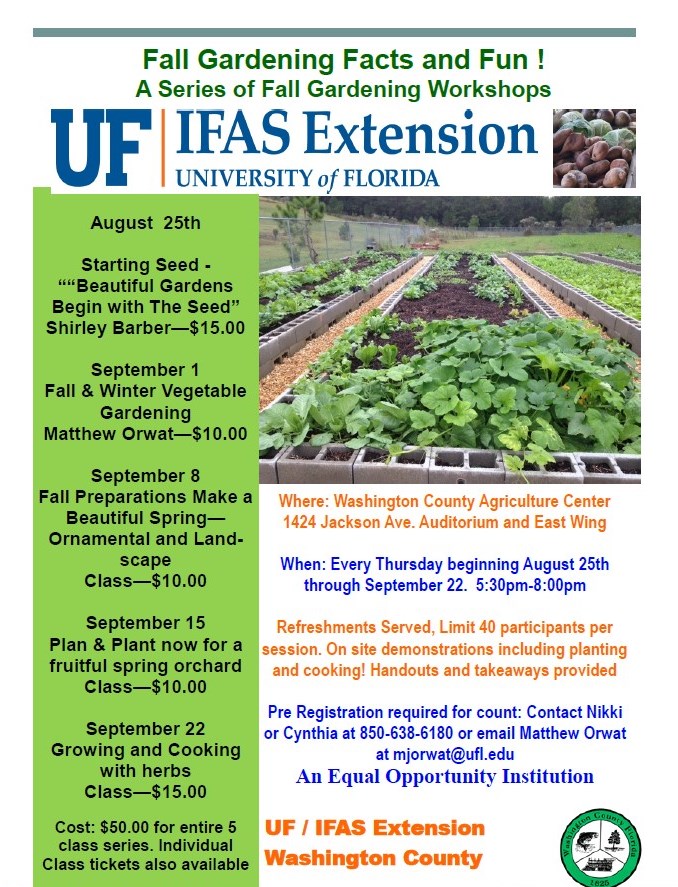
by Matthew Orwat | Aug 11, 2016

Click below for more info
http://washington.ifas.ufl.edu/blog/2016/08/10/upcoming-fall-gardening-workshop-series/
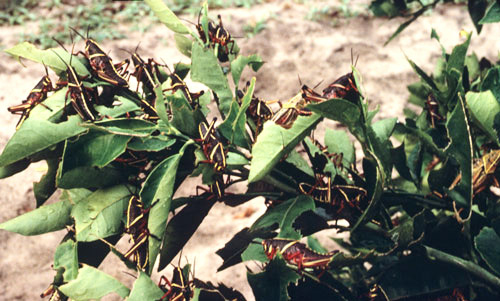
by Matthew Orwat | Jun 1, 2016
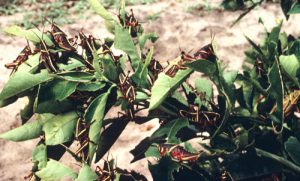
Young nymphs of the eastern lubber grasshopper, Romalea microptera (Beauvois), clustered on a citrus reset (young citrus tree). Photograph by John Capinera, University of Florida.
The Eastern Lubber Grasshopper, also known colloquially as the “Georgia Thumper,” can be highly destructive to a variety of vegetable crops. This May many growers and vegetable gardeners have reported unusually high numbers of nymphs, the juvenile form of the grasshopper.
This observation is consistent with the usual increase of nymphs in vegetable gardens during the spring months. The old adage of “an ounce of prevention is worth a pound or cure” applies here. Now is the time to exert control over the nymphs before they mature. Adults do the greatest crop damage in July and August.
Additionally, adult females lay their eggs in the summer, with hatching the following April. Reducing the numbers this year will reduce the numbers in the following years.
The first step to control of the Eastern Lubber Grasshopper is prevention. They like to feed on weedy vegetation, so reducing weed cover in and around crops will reduce the incidence of Eastern Lubber damage. Short vegetation does not usually provide enough forage for grasshoppers, so mowing vegetation around fields is an excellent preventative strategy.
Although most home gardeners can control Eastern Lubber Grasshoppers by mechanical means (hand picking) this is usually not a feasible option for large gardens or small farm plantings. Fortunately, there are several products on the market for commercial producers to use.
Keep in mind, grasshoppers are much easier to control while they are in the young nymph stage, so early action is paramount when nymphs are observed. Several effective insecticides include carbaryl, bifenthrin, cyhalothrin, permethrin, and esfenvalerate. Look at the label to find these active ingredients, since they are sold under various brand names.
For more information about the Eastern Lubber Grasshopper or for specific crop recommendations, please visit this UF/IFAS publication on Grasshoppers and the UF/IFAS Featured Creatures Entomology Page.
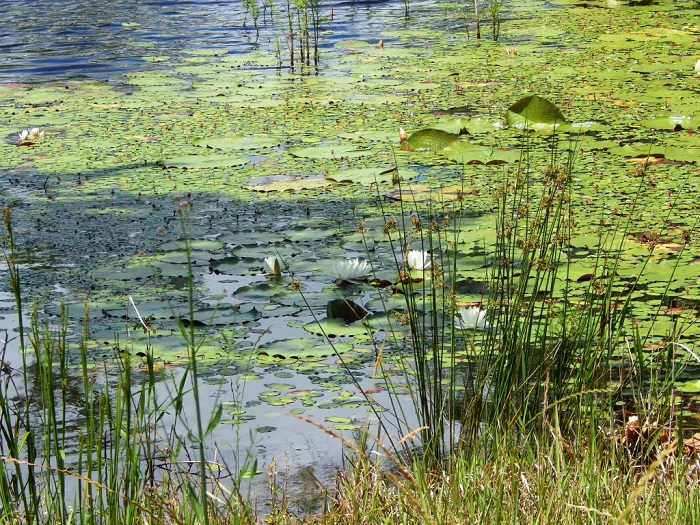
by Matthew Orwat | May 24, 2016
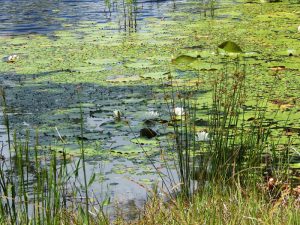 Ponds can be a source of great enjoyment. However, properly managing them to meet your desired goals can be challenging. Panhandle Pond Management, a two part series being offered by UF/IFAS Extension, is designed to help pond owners/managers become more successful in reaching their goals. Specialists from campus will be onsite to share their expertise. Dr. Chuck Cichra, UF Fisheries and Aquatic Sciences, will lead session 1 and Dr. Stephen Enloe, UF Center for Aquatic and Invasive Plants, will lead session 2.
Ponds can be a source of great enjoyment. However, properly managing them to meet your desired goals can be challenging. Panhandle Pond Management, a two part series being offered by UF/IFAS Extension, is designed to help pond owners/managers become more successful in reaching their goals. Specialists from campus will be onsite to share their expertise. Dr. Chuck Cichra, UF Fisheries and Aquatic Sciences, will lead session 1 and Dr. Stephen Enloe, UF Center for Aquatic and Invasive Plants, will lead session 2.
Session 1 – May 31st Fish Management will focus on decisions that the pond owner can make that directly relate to the success and productivity of the fish population in a pond. Stocking, harvesting, feeding, aeration and other topics will be covered.
Session 2 – June 7th Aquatic Weed Management will involve weed identification, control options, and herbicide application techniques. If you have problem weeds bring samples for identification and control recommendations.
Panhandle Pond Management will be held at the Washington County Agricultural Center, 1424 Jackson Ave, Chipley FL. Each session will begin at 6:00pm; a meal will be served. To ensure we have enough food advanced registration is strongly encouraged. There is a $10 registration fee per session. To register call the Washington County Extension Office (850-638-6180) or use the links below for online registration. Session 2 attendees will receive a copy of Weed Control in Ponds a bound book sold through the IFAS bookstore.
Online Registration
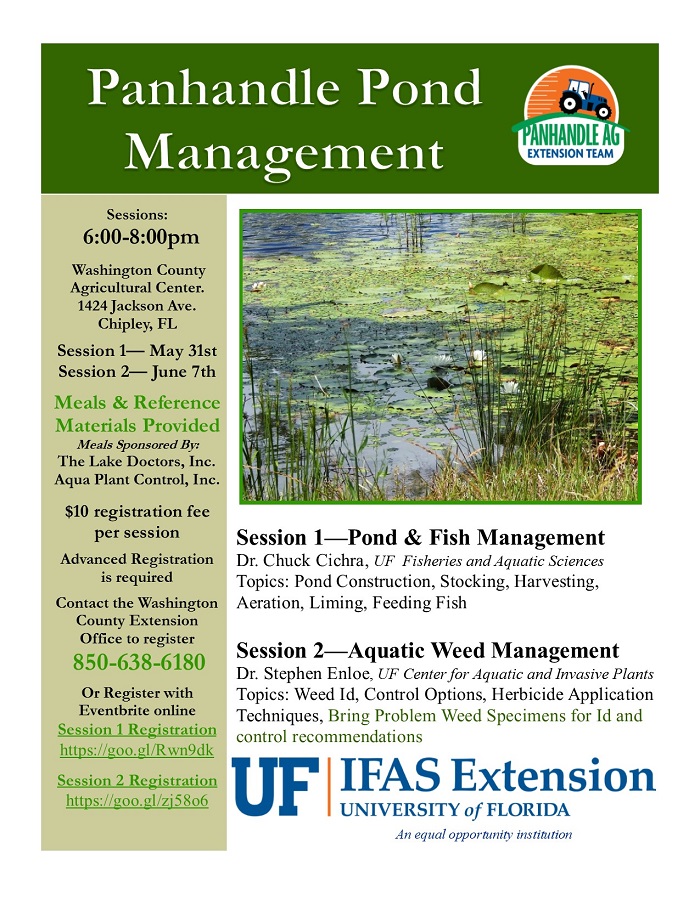
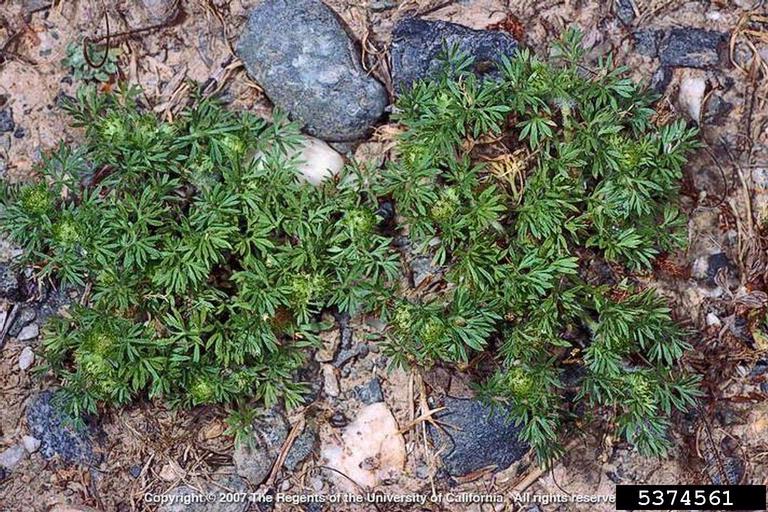
by Matthew Orwat | May 12, 2016
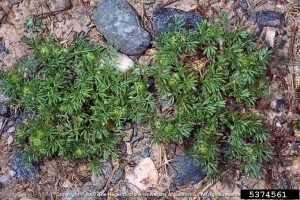
Burweed, Soliva Sessilis. – Image Credit: Joseph M. DiTomaso, University of California – Davis, Bugwood.org. Creative Commons License
This spring, lawn burweed has been an especially noticeable problem in lawns. Extension offices throughout Northwest Florida have been fielding many questions and finding solutions to lawn burweed infestations!
On the top of my list of lawn related annoyances is stepping into a patch of burweed, Soliva sessilis, which is in the sunflower family and is also known as spurweed. The leaves are opposite along the stem and sometimes resemble parsley. The main ways in which burweed can irk the casual gardener are sticking to socks, sneaking in with the dog, or littering flower beds with its nuisance. It can also hide in the house and reappear when shoes are removed. This causes pain in both the foot and the ear.
Aside from herbicides, maintaining a healthy vigorous lawn will prevent weeds from taking over. If your lawn is reasonably healthy and only a few instances of this weed exist, try to mechanically remove them and encourage the lawn to outgrow them.
If cultural methods aren’t sufficient, science has given us several options to control this irksome pest. Herbicides containing the active ingredients dicamba, 2,4-D or atrazine are good at controlling burweed as a post emergence control when applied from December through March. Be careful to use reduced rates on centipede and St. Augustine lawns, and never use more than the labeled rate since injury can occur when using these products on these species. Later applications have less effect on burweed because as it matures it is harder to control. Additionally the burs, once present on the lawn, are hard to remove. As the daytime temperatures rise to 90ºF, some of these herbicides may cause lawn damage. Try to keep the spray residue outside of the root zone of desirable plants to avoid injury and always follow label directions.
Be aware that burweed reproduces by seed, so mowing it down will only increase the problem by burying the seed for fall germination. Although we are now in the month of May, control of actively growing burweed might still be warranted if it is still flowering and setting seed. As temperatures warm up burweed will die, as it is a winter annual. In cases where it is already dying, control is not warranted since the natural cycle of winter annuals is concluding.
If an infestation of burweed has occurred this year, take note. The best time to apply pre-emergent herbicides to control burweed is in October. A widely used preemergence product for burweed control is isoxaben, which is sold under the brand name of Gallery as well as others. It prevents the weed from emerging from the ground when it germinates and can be used on St. Augustine, centipede, bahia and zoysia lawns, as well as in ornamental shrub beds. In northwest Florida, this herbicide needs to be applied in October for best results. A second application later in the season might be warranted. For more information about control, please consult this excellent article on lawn burweed management.
The active ingredients mentioned above are present in a variety of ‘trade name’ products* available from your local garden center, farm supply or co-op. Be sure to read label instructions carefully and contact your local extension office for any assistance. I hope all the northwest Florida lawn managers prevent burweed during the upcoming fall so that lawns will be burweed free next spring.
Happy Gardening!
